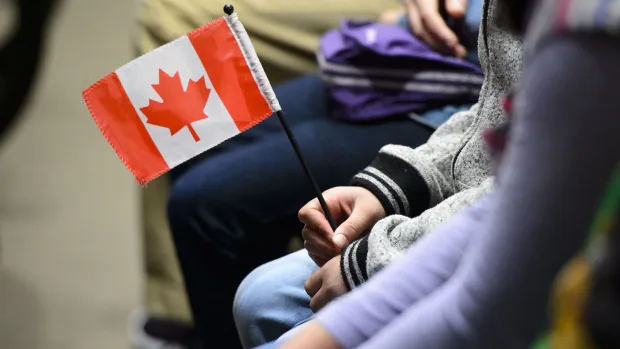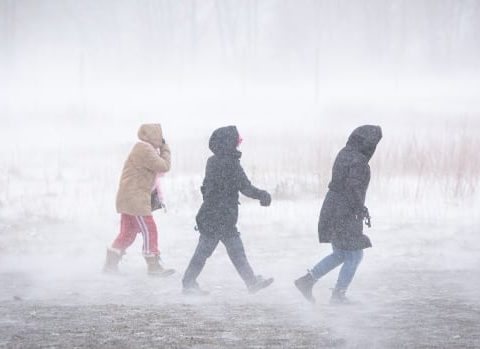
Immigration Minister Sean Fraser says his government is preparing to reinstate a program that would help to speed up the process of turning newcomers in Canada under temporary permits into permanent residents.
“We are looking right now at the best path forward to create a permanent pathway for temporary residents,” he told CBC’s The House in an interview airing this weekend.
A previous program called the “temporary resident to permanent resident pathway” — or TR to PR — was put in place last year for eight months after COVID-19 lockdowns shut the border to newcomers to prevent the spread of the virus.
It gave 90,000 essential workers, front-line health care workers and international students like Kushdeep Singh an accelerated path to permanent status.
Singh arrived in 2019 to study business administration at Norquest College in Edmonton. The temporary TR to PR program was announced just as he was preparing to write his final exams.
“When I first came to Canada I thought, ‘It’s gonna take almost about four years.’ Two years of my studies then two years of waiting for my PR application,” he said.
Instead, the approval came through in less than a year.
“And I told my mom. She was so, so happy,” he said. “I think she was happy because I know how hard she also worked for me, like all my journey since I came here and … how she also sacrifices, like sending me away from her, so that was a good moment.”
CBC News: The House20:04Destination Canada
Migrants, experts and Immigration Minister Sean Fraser talk about how this country is handling the needs of immigrants and refugees coming to Canada.
Clock is ticking
Fraser said the new program won’t be identical to the old one. He said he’s working under a tight 120-day timeline established in a motion approved by the Commons last month.
“That actually puts me on a clock to come up with a framework to establish this new permanent residency pathway, not just for international students, but also for temporary foreign workers,” he said.
“We’re in the depths of planning the policy so we can have a policy that’s not driven by a need to respond urgently in the face of an emergency, but actually to have a permanent pathway that provides a clear path for those seeking permanent residency who can enter Canada.”
Rupa Banerjee is a Canada research chair focusing on immigration issues at Toronto Metropolitan University. She said continuing to fast-track some people to permanent resident status is good policy.

“Focusing on individuals who are already in the country, that was an essential move at the time, when we had border closures and a lot of the pandemic restrictions,” she said during a separate panel discussion on The House.
“It also is really beneficial because we know that those who already have Canadian work experience, Canadian education, they do tend to fare better once they become permanent residents relative to those who come in one step straight from abroad.”
The federal government set a goal of accepting 432,000 newcomers this year alone. Fraser said his department is ahead of schedule, despite the pandemic and the unexpected pressures of working to resettle thousands of people fleeing conflict in both Afghanistan and Ukraine.
“This week we actually resettled the 200,000th permanent resident, more than a month and a half ahead of any year on record in Canada,” he said. “We are seeing similar trends across other lines of business like citizenship, like work permits, which in many instances are double the usual rate of processing.”
Too many pathways?
Despite the higher numbers, concerns remain about processing backlogs and what Andrew Griffith — a former senior bureaucrat with Immigration, Refugees and Citizenship Canada — calls an overly complicated immigration system with too many programs.
“There are just so many pathways to immigrate to Canada. And I’m not convinced that anybody applying to Canada — or even the people who try to manage the program — that they have a full grip in terms of the program,” he said. “So there’s a real case, I think, to be made for simplification.”
Griffith argued the number of newcomers being accepted is less important than who is coming to Canada — what skills they bring and whether they can help this country improve productivity and economic growth.
Banerjee agreed that the number of newcomers is less important than who they are and whether there are services available to help them adjust to life here.
“The question is, can we actually integrate these individuals so that they can really contribute to the Canadian economy and also to Canadian society, more importantly?” he said.
Fraser said his department always sets immigration and refugees targets with the availability of language training and other settlement supports in mind.
“This is a really well thought out way to establish immigration targets,” he said. “But we know we need to keep growing the number of people who are coming to Canada to fill gaps in the labour force and to, frankly, address a very troubling demographic trend with our aging population if we’re going to be able to sustain services that we depend on.”
And the pressures on the system continue.
Canada signed on to U.S. President Joe Biden’s Declaration on Migration and Protection, released at the Summit of the Americas on Friday. The agreement’s goal is to provide a legal and safer way in for the thousands fleeing gang warfare, corruption and poverty in Central and South America.
Under that agreement, Canada will continue to accept at least 50,000 seasonal farm workers — a target confirmed with Canadian employers — and to increase refugee resettlement from the Americas by welcoming up to 4,000 individuals by 2028.
That might not seem like a big change, but Fraser said it has to be measured against all the other ways people arrive in Canada.
“By global standards, thousands of refugees being resettled from a specific region and having that commitment for people is actually an extraordinary thing,” he said.













